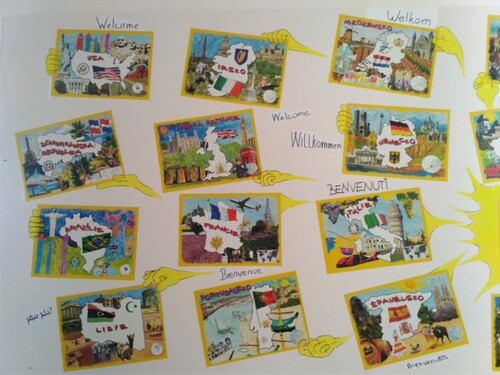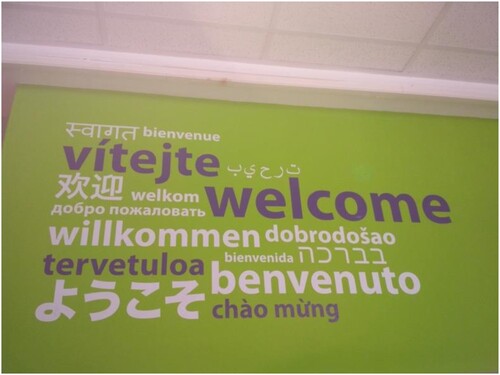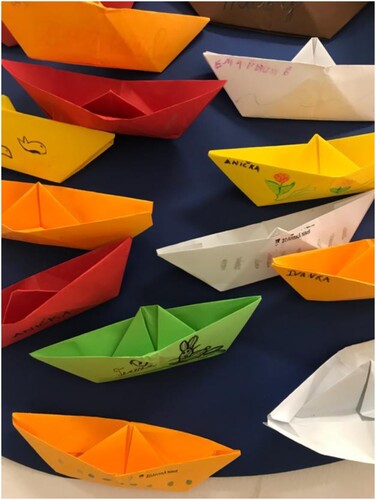Figures & data
Table 1. Research sample: Schools.
Table 2. Number of photographed objects and number of written utterances in different languages.
Table 3. Research sample: Principals.
Table 4. System of categories.
Table 5. Number of objects in displayed languages.
Table 6. Authorship of photographed objects.
Table 7. Location of the object.
Table 8. Number of categorized idea units in interviews.
Figure 1. Decoration of the inner corridor in school A.

Figure 2. A sign in German with an informative function (school B).



